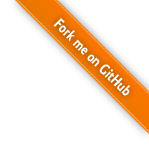
25.06.2018 Uncategorized

We had a really great week at the Web3D in Poznan last week. A wondeful city, a perfect organized conference and great people.
Together with Nicholas Polys (Virginia Tech) we gave a tutorial session about X3D.
Our X3DOM related slides are now online here.
18.07.2016 Uncategorized
This year, the Web3D consortium and Fraunhofer IGD will present X3DOM at SIGGRAPH 2016!

So, if you are going to Anaheim, stop by at the SIGGRAPH exhibition at booth 755 (Web3D Consortium).
07.06.2016 Uncategorized
Recently, the Staatliche Museen zu Berlin (National Museums in Berlin) released a 3D visualization of the famous Pergamon Altar.
The 3D scan of this impressive monument, as well as the 3D Web application (in German), have been created by Fraunhofer IGD, featuring technology such as CultLab3D or instantUV and, of course, X3DOM.
Visit http://3d.smb.museum/pergamonaltar/ to have a look!
20.10.2015 Uncategorized
The Khronos Group, an open consortium of leading hardware and software companies, just announced that the glTF™ 1.0 (GL Transmission Format ) royalty-free specification for transmission and loading of 3D content has been finalized for Ratification and is immediately available for use by tools and application vendors.
With SRC, X3DOM already provides support for a modified subset of an earlier version of glTF™. The proposed extensions KHR_binary_glTF and WEB3D_quantized_attributes have been actively developed by X3DOM contributors, bridging the gap between Khronos’ and the Web3D consortium’s standards. The X3DOM team will be happy to continue this fruitful collaboration in the future, creating a well-specified, commonly accepted exchange format for efficient transportation of 3D assets on the Web.
See the official Khronos press release here. The GitHub project can be found here.
Edit: The German IT portal heise.de just mentioned glTF in a small online article (in German) – you can find it here.
23.03.2015 Showcase Uncategorized
think project!, the provider of the project platform by the same name and expert for cross-enterprise collaboration, has developed a solution for the quick utilization of digital building data. In terms of visualization, think project! is now supported by Fraunhofer IGD. To allow for high-performance visualization of BIM data, while still providing fine-granular user interaction, X3DOM is the framework of choice.
Check the official press announcement here!
26.02.2015 Showcase Uncategorized
The 3D Scene Search Engine (3DSSE) by the Multimedia Research Group of Athena Research Center uses X3DOM for visualizing captured Scenes. 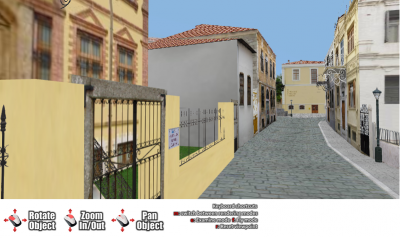
Dive into it by searching the database – an empty query will show all available content – and navigate through the scenes here. (You can, for example, use X3DOM’s fly mode by pressing ‘f’)
13.02.2015 Showcase Uncategorized
Just another example of what people do with X3DOM:
Available through Mathworks’ MATLAB Central, the function FIGURE2XHTML exports your 3D Matlab figure to an X3DOM scene, which can directly be viewed inside your browser!
26.12.2014 Uncategorized
Fraunhofer IGD uses X3DOM / POP-Buffer this year for their first 3d digital x-mas card!
18.11.2014 Uncategorized
A fresh update for the powerful 3D content authoring tool BS Content Studio by Bitmanagement is now available.
This also includes an improved support for exporting scenes to X3DOM.
20.10.2014 Uncategorized
With the experimental Chromium support for the new WebVR API, we are pleased to showcase the first Oculus Rift 2 demo using X3DOM with a Leap for hand tracking!
Here, you can enjoy a short video.
Check the demo out here!
29.09.2014 Uncategorized
We are happy to see the first X3DOM Demo running on a Google Cardboard VR device, using a regular Nexus 5 smart phone. Many thanks to Manuel Olbrich for providing this demo, which is solely built with standard browser technology – no external services are necessary. Check it out here.
26.09.2014 Uncategorized
We are glad to announce that colleagues from Toshiba have just provided an implementation of the SplinePositionInterpolator node, which is already available in the current development version of X3DOM.
Check out the example here!
19.09.2014 Uncategorized
We just updated our browser support page to include the recent changes with Safari on iOS8 and IE11 on Win7/Win8. The intermediate solutions (such as Chrome Frame) are not necessary any more and both have great support for WebGL natively. 2014 is really a great year for WebGL based system and we have come a long way in five years!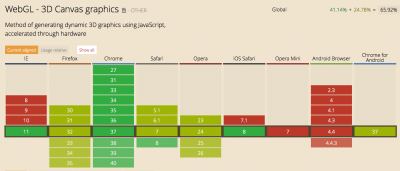
31.07.2014 Uncategorized

One week until Web3D 2014 and SIGGRAPH 2014 in Vancouver! Meet the X3DOM and InstantReality team at both conferences and on the exhibition floor in the Web3D Consortium booth #1045, where we will present the latest features of X3DOM 1.6.1 and InstantReality 2.4.0. This year brings a major step toward a service oriented architecture for web-based applications, both rendered on a client or streamed from a server from different back-ends, and we’re thrilled to show you all of it.
03.06.2014 Uncategorized
iOS was one of the first mobile operation systems which provided support for WebGL and we worked hard to ensure X3DOM runs on those devices. However, WebGL was not switched on by default in the standard Safari browser. This changed with iOS8 which fully supports WebGL and is available right now as developer beta.
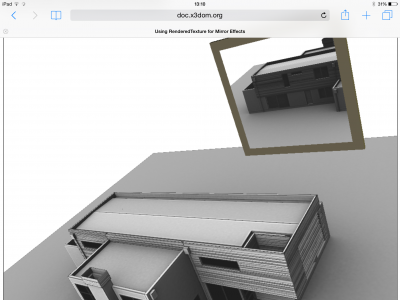
X3DOM on iOS8
08.05.2014 Uncategorized
The X3DOM team is proud and happy to announce stable release 1.6 of the X3DOM Library!
With version 1.6, we hope to make X3DOM more flexible, stable and well-documented.
These are the most important changes:
11.03.2014 Uncategorized
At the CeBIT IT fair, which takes place this week in Hannover, Fraunhofer IGD presents another project which is partly based on X3DOM technology.
The urbanAPI toolset will allow the fast development and deployment of participative policy support applications for decision support, conflict management, analysis and visualisation. Such developments collectively provide vital decision-making aids for urban planners in the management of the territory, support policy makers for the associated responsibilities in political negotiation, and enable wider stakeholder engagement regarding the future development of the territory. Since the client software is based on standard Web technology, X3DOM serves as an ideal solution for the geospatial 3D visualization components.
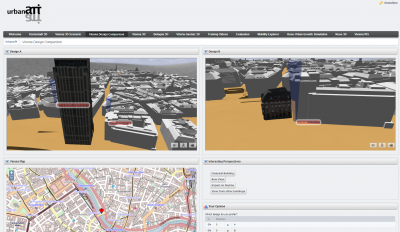
You can see the urbanAPI demonstrations at Hall 9, E40, Exhibit 23 (“Geoinformationsmanagement”) by Fraunhofer IGD.
07.03.2014 Uncategorized
At this year’s CeBIT exhibition, the team from Fraunhofer IGD / Fraunhofer IDM@NTU, Singapore, presents a new, exciting, X3DOM-based prototype for fast, intuitive exploration of information, which is entitled InfoLand. Information is presented on a multi-touch interface through a graphical representation, serving as an information or marketing tool for industry partners and collaborators, researchers, and students. Information is presented in the form of text, images, videos and 3D models, which can be accessed intuitively.
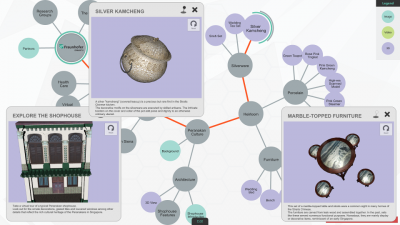
Another prototype visualizes the results of a research project related to energy consumption on the Nanyang Technological University campus in Singapore. Information on various buildings over a selected time span can be translated into concise graphical representations. As decision makers and consumers have increasingly come to expect information to be readily accessible, quickly and at any time, prototypes such as these serve as a tool for consumers to navigate for only pertinent information from a vast database that is translated into clear visuals for easier understanding.
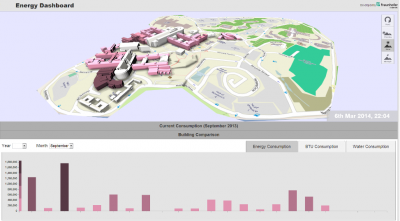
You can see and try the prototypes at Hall 9, E40, Exhibit 23 (“Geoinformationsmanagement”) by Fraunhofer IGD.
19.02.2014 Uncategorized
The website http://patrimonio3d.ugr.es/, which was just launched within the past few days, shows information about around 20 scanned sculptures, and several scanned historical buildings and rooms. The website also provides a large catalog of pictures and other art pieces that belong to the andalusian universities.
The project has been coordinated by the University of Granada (contact: Javier Melero) and the 3D scanning works and website have been developed by AgeO , a spin-off of the University of Granada
Using X3DOM, the objects can also be inspected in 3D – give it a try!